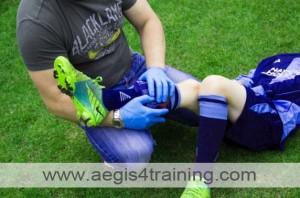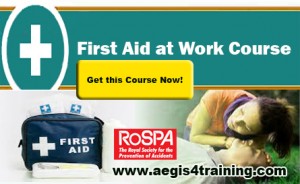Do you play for a sports team? Perhaps you are a coach or a spectator. Whatever your role is you can play an important

When you’re injured, (recent – acute injury), there’s a natural inflammatory response that occurs in your tissues as blood and other fluids enter the area that needs attention. Pain soon follows, letting your brain know that something is not right. This pain is a protective mechanism so you hopefully don’t cause any more unnecessary damage. The inflammatory response initiates repair of the injured area – whether it’s a bone, ligament, tendon, or any other body tissue. This is NORMAL and NECESSARY – so the question is not only if you should use ice, heat, or other type of therapy, but how much should you be intervening with the normal workings of the body, especially to the extent of taking drugs such as anti-inflammatory medications.
Once you’re injured the questions arise like wildfire. Do you ice that injury or heat it? Or if you use both ice and heat – which one comes first? And how long and how often do you apply the therapy? Maybe you shouldn’t be using ice or heat at any time. Do you wrap the injury and elevate it? Do you stay off the injured area or get in some active recovery? How about anti-inflammatory medications (NSAIDs)? Should you take them when you’re injured? Should you take a NSAID to speed up your recovery?
I’ll break this down and discuss how to properly use some different types of readily available therapies to treat an injury, both chronic and acute. But first, to understand what type of treatment you might want to employ, it’s important to understand what is going on inside your body when you’re injured, and of course – how did you get injured?
“Damn, I’m Injured†So now what do you do? The first thing to do is to think of WHY you got injured. No need to go through that again, right? Nope. If you understand the why then you can not only handle the injury correctly but keep it, and other injures, from occurring again. So if you really think you got injured because you didn’t stretch or you ran without your orthotics or your lucky rabbit’s foot fell out of your nutrition bag, then this is where you stop and read from the beginning.
Does this even work? There are two common “go to†therapies that the injured athlete uses – ice and anti-inflammatory medications (NSAIDs). I rarely use ice (or heat) and I never use NSAIDs when treating an injury of any type. There are reasons why I don’t use these therapies often or at all, which will be explained. First – should you use ice, heat, or RICE, and if so then when and how often? Second – should you use NSAIDs? Or perhaps more accurately, why would you not want to use NSAIDs?
If you are at risk then begin by addressing those stress issues so you reduce your chances of becoming injured as well as heal and recover faster from an existing.


